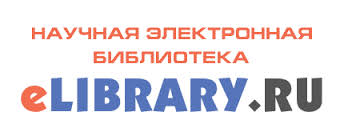THE PROBLEM OF RUSSIAN NATIONAL CHARACTER PASSING DIFFERENT MILESTONES OF RUSSIAN HISTORY IN PROSE OF M. SHOLOKHOV AND G. RASPUTIN: EPIC NOVEL “QUIET FLOWS THE DON” AND “LIVE AND REMEMBER”
Abstract
https://doi.org/10.18522/1995-0640-2025-3-10-19
The article aims to identify social-historic and semantic contexts that draw together and differentiate both of the artists. The author explains similarities with both writers that lie on ideaaesthetic level. To show this the author of the article compares principles of psychologism and the ways fates of the main characters are depicted. Cognation of two art systems is codetermined by the national qualities concentration and the type of narration which help to identify the depth of diving into the actions, isomorphism of author’s statement and reality. A conclusion of successive and typological connection of art of the younger modernist to the greatest Russian writer of 20th century. It is based on the analysis of differences of personal qualities, a sense of nature, author’s attitude to them made by Grigoriy Melekhov and Andrey Guskov.
Key words: Sholokhov, Rasputin, national character, aesthetic of nature, course of life
Downloads
Published
How to Cite
Issue
Section
License
Copyright (c) 2025 Natalia V. Tibushkina

This work is licensed under a Creative Commons Attribution-NonCommercial 4.0 International License.
Authors who publish with this journal agree to the following terms:
- Authors retain copyright and grant the journal right of first publication with the work simultaneously licensed under a Creative Commons Attribution License that allows others to share the work with an acknowledgement of the work's authorship and initial publication in this journal.
- Authors are able to enter into separate, additional contractual arrangements for the non-exclusive distribution of the journal's published version of the work (e.g., post it to an institutional repository or publish it in a book), with an acknowledgement of its initial publication in this journal.
- Authors are permitted and encouraged to post their work online (e.g., in institutional repositories or on their website) prior to and during the submission process, as it can lead to productive exchanges, as well as earlier and greater citation of published work (See The Effect of Open Access).



















